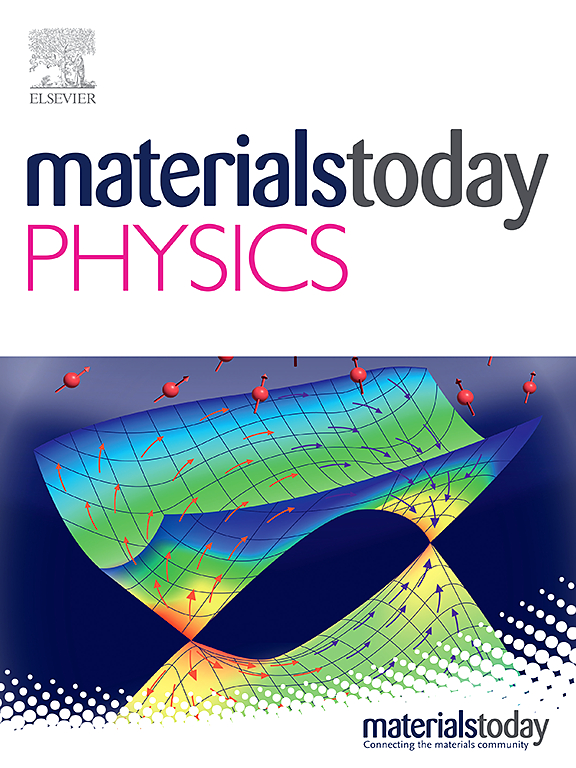同时优化电输运和热输运,获得Mg1.96Zn0.04(Si0.3Sn0.7)0.98Sb0.02合金的高品质系数
IF 9.7
2区 材料科学
Q1 MATERIALS SCIENCE, MULTIDISCIPLINARY
引用次数: 0
摘要
近年来,Mg2Si衍生物因其丰富的稀土资源和低成本的环境友好性,作为一种有前途的热电材料而受到广泛关注。优化ZT热电性能的主要挑战是Mg2Si的低电导率和高导热率。本研究通过同时优化Sb和Zn共掺杂的电和热输运,证明了Mg2Si0.3Sn0.7在673 K时的高ZT为~ 1.6。Sb和Zn共掺杂样品的超低变形和合金散射势有助于保持创纪录的高霍尔迁移率~ 70-90 cm2/V.s。掺杂诱导布丁模带结构具有导带超收敛性,平衡了高塞贝克系数和高导电性。掺杂产生的点缺陷和位错也有助于降低晶格热导率。利用优化后的Mg1.96Zn0.04(Si0.3Sn0.7)0.98Sb0.02制成的单腿发电机在ΔT ~ 329 K下的效率达到了创纪录的~ 9.5%。本文章由计算机程序翻译,如有差异,请以英文原文为准。

High figure-of-merit in Zn, Sb co-doped Mg2Si0.3Sn0.7 alloy through simultaneous optimization of electrical and thermal transports
The derivatives of Mg2Si have recently attracted wide attention as promising thermoelectric materials due to earth abundant and environment friendly low-cost constituents. The main challenge in optimizing the thermoelectric figure of merit ZT, is the low electrical and high thermal conductivities of Mg2Si. The present study demonstrates high ZT of ∼1.55 at 673 K in Mg2Si0.3Sn0.7 through simultaneous optimization of electrical and thermal transport through Sb and Zn co-doping. The ultra-low deformation and alloy scattering potentials in Sb and Zn co-doped samples helps in maintaining record high Hall mobility ∼70–90 cm2/V.s. The doping induced pudding mold band structure with hyperconvergence in conduction band balances high Seebeck coefficient and high electrical conductivity. The point defects and dislocations created by doping helps in lowering of lattice thermal conductivity as well. The uni-leg power generator fabricated using optimized Mg1.96Zn0.04(Si0.3Sn0.7)0.98Sb0.02 exhibits a record efficiency of ∼9.5 % at ΔT ∼ 329 K.
求助全文
通过发布文献求助,成功后即可免费获取论文全文。
去求助
来源期刊

Materials Today Physics
Materials Science-General Materials Science
CiteScore
14.00
自引率
7.80%
发文量
284
审稿时长
15 days
期刊介绍:
Materials Today Physics is a multi-disciplinary journal focused on the physics of materials, encompassing both the physical properties and materials synthesis. Operating at the interface of physics and materials science, this journal covers one of the largest and most dynamic fields within physical science. The forefront research in materials physics is driving advancements in new materials, uncovering new physics, and fostering novel applications at an unprecedented pace.
 求助内容:
求助内容: 应助结果提醒方式:
应助结果提醒方式:


